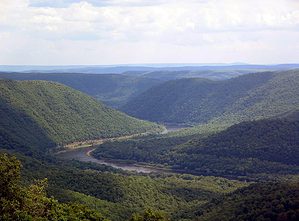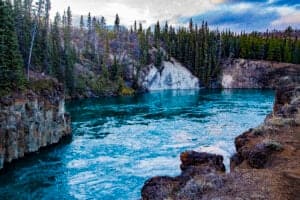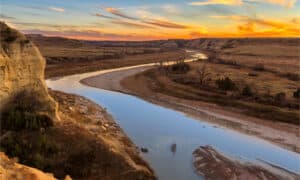The Mississippi River is the second-longest river in North America. It stretches 2,340 miles from its beginning at Lake Itasca in Minnesota to the Gulf of Mexico. Along its journey, it passes through ten U.S. states and forms a border between two others. It is one of the most important rivers for transportation and commerce in the United States. In addition, the Mississippi River has been an integral part of American culture since before European settlement.
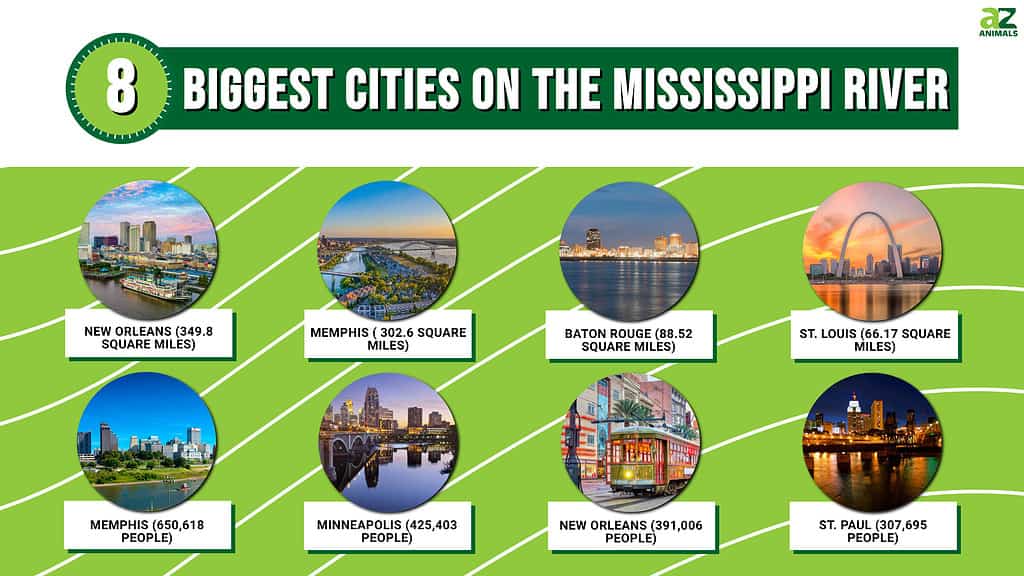
4 Biggest Cities by Area
These are the four largest cities along the Mississippi River by land size.
| Rank | City Along the Mississippi River | Size in Square Miles |
|---|---|---|
| 1 | New Orleans | 349.8 square miles |
| 2 | Memphis | 302.6 square miles |
| 3 | Baton Rouge | 88.52 square miles |
| 4 | St. Louis | 66.17 square miles |
New Orleans
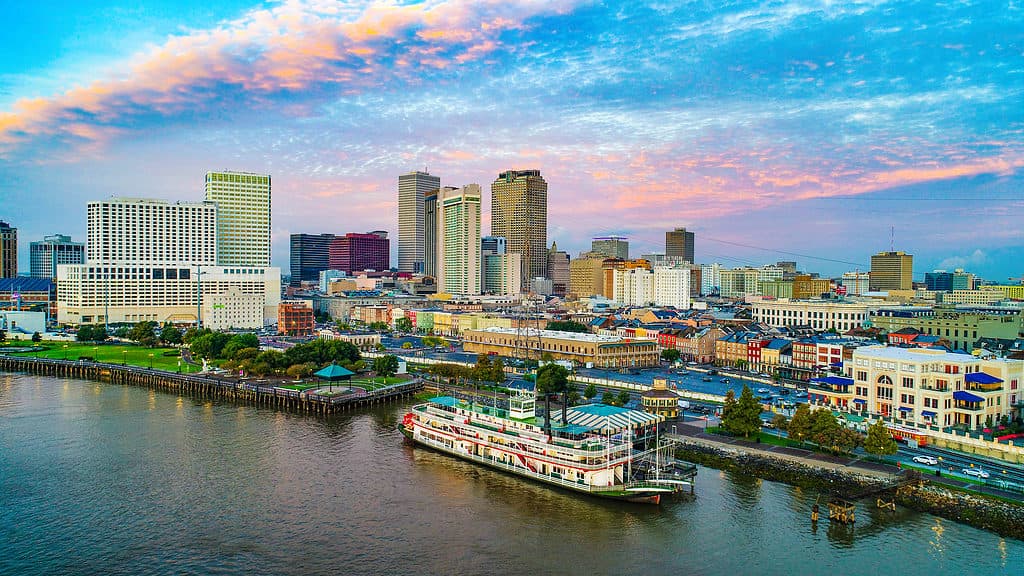
Apart from being an important port on the Mississippi River, New Orleans also serves as one of America’s most significant oil refining centers.
©Kevin Ruck/Shutterstock.com
New Orleans is the largest city located on the Mississippi River. The land size of New Orleans is 349.8 square miles. It is a culturally diverse and vibrant city that has become known for its unique cuisine, art, music, and festivals.
The city was founded in 1718 by Jean-Baptiste Le Moyne de Bienville and named after Philippe II of Orléans. New Orleans also has many landmarks, including Jackson Square and Bourbon Street. You’ll also find St Louis Cathedral, Garden District, and Audubon Aquarium of the Americas in New Orleans.
Its population is estimated at 393 thousand people, with a metropolitan area population of over 1 million inhabitants. Apart from being an important port on the Mississippi River, it also serves as one of America’s most significant oil refining centers. Additionally, New Orleans is popular for its sugar cane farming.
An interesting fact about New Orleans is that it sits below sea level. This makes flooding a common issue during hurricane seasons or heavy rainfalls. This problem has been addressed with various flood control projects throughout the years. While this protects local residents from potential disasters caused by water accumulation in low-lying areas, flooding still occurs.
Memphis
The 2nd largest city on the Mississippi River, located in southwestern Tennessee, is called Memphis. Memphis has a land area of 302.6 square miles. It is known as a cultural hub for music, particularly blues, soul, southern rock, and jazz. The city features many historical sites, such as Sun Studio, where Elvis Presley recorded his first songs, and Graceland, Elvis’s home, now a museum.
This city also has attractions like Beale Street with its restaurants, nightclubs, and shops. Mud Island features an outdoor amphitheatre, and the Stax Museum of American Soul Music honors some of the genre’s biggest stars. The National Civil Rights Museum at Lorraine Motel commemorates Martin Luther King Jr.’s assassination, and the Pink Palace Museum & Planetarium showcases artifacts from Egypt and interactive exhibits.
Baton Rouge
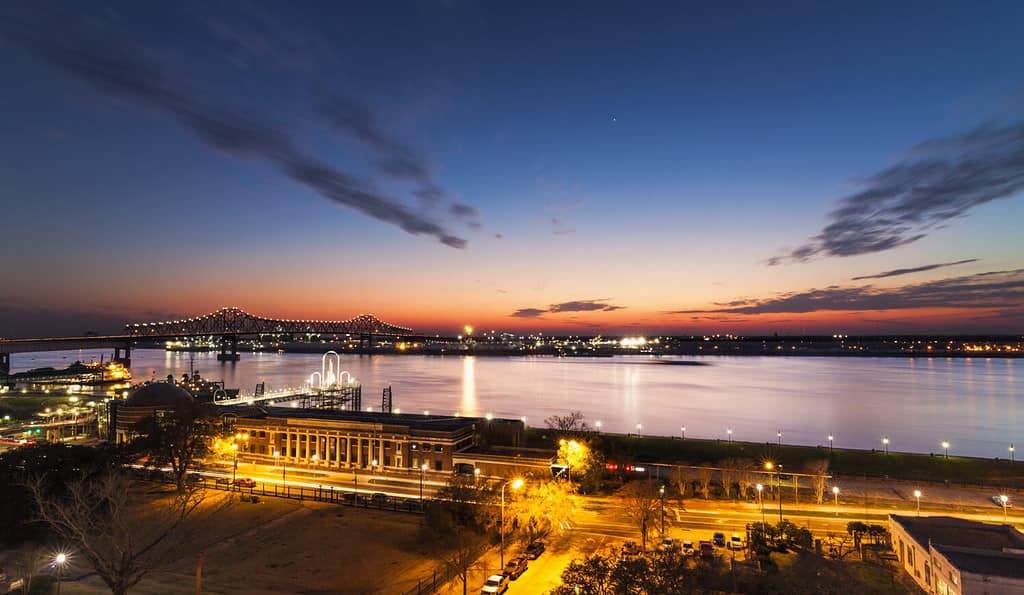
Baton Rouge has numerous universities and colleges, including Louisiana State University (LSU).
©Berkomaster/Shutterstock.com
This city is the capital of Louisiana and is located on the eastern bank of the Mississippi River. It is the 3rd largest city along the Mississippi River, with a land area of 88.52 square miles. It has a population of around 230,000 people and is one of the largest cities in the state.
The city was founded in 1699 by French Canadian explorer Pierre Le Moyne d’Iberville and named after an Indian term meaning “red stick.” Baton Rouge has numerous universities and colleges, including Louisiana State University (LSU). The city’s economy relies heavily on its port activities and manufacturing and tourism industries. Additionally, Baton Rouge hosts several annual festivals, such as Mardi Gras and Red Stick Revelry, that draw thousands of visitors nationwide every year.
St Louis
St. Louis is a major city in the U.S. state of Missouri, located on the banks of the Mississippi River and bordered by Illinois to its east. It is the 4th largest city along the Mississippi, with a total land area size of 66.17 square miles. It is home to over 300,000 people and has an estimated metropolitan population of 3 million people.
St Louis was founded in 1764 as part of the French Louisiana Territory and quickly grew into an important port for steamboats traveling up and down the river. The iconic Gateway Arch serves as a reminder that it was once known as the “Gateway to the West” due to its importance during westward expansion in America between 1804-1806 when Lewis & Clark explored uncharted territory beyond St Louis’ borders.
Today, St Louis remains one of America’s most vibrant cities with many cultural attractions such as world-renowned museums like The Saint Louis Art Museum, live music venues such as Loufest Music Festival, historic landmarks like Union Station train station (now repurposed into shops/restaurants), sports teams including 11 time World Series champions Cardinals baseball team and much more!
4 Biggest Cities by Population
These are the four biggest cities along the Mississippi River, sorted by population size.
| Rank | City Along the Mississippi River | Size by Population |
|---|---|---|
| 1 | Memphis | 650,618 people |
| 2 | Minneapolis | 425,403 people |
| 3 | New Orleans | 391,006 people |
| 4 | St. Paul | 307,695 people |
Memphis
The city of Memphis sits on the eastern side of this mighty river, giving it an important place in American history and culture. Memphis has a population of 650,618, making it the largest city along the Mississippi River by population. As one of America’s largest cities, Memphis has long been known as a hub for trade and transportation due to its location on the Mississippi River. It was once home to cotton plantations that made use of its fertile soil and access to waterways like the Mississippi River, allowing them to move goods upriver quickly and easily. Today, many people visit Memphis each year to experience its rich musical heritage or take part in festivals like Mardi Gras that honor its unique culture along with its beautiful views of the river itself!
Minneapolis
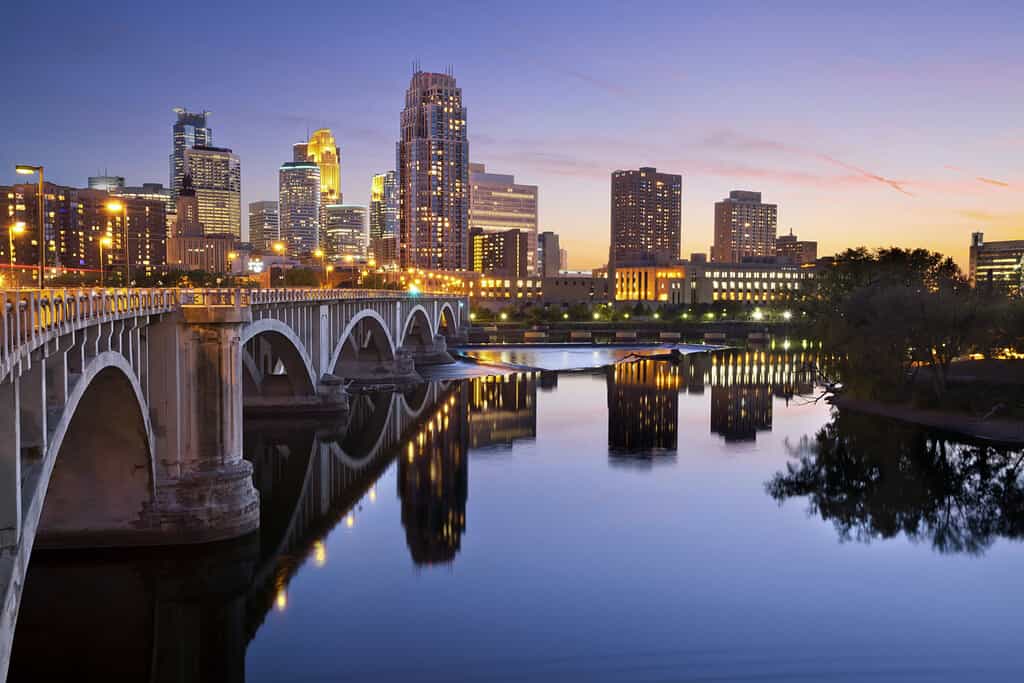
Minneapolis was founded by French fur traders in 1819 and has grown to become one of America’s most vibrant cities.
©Rudy Balasko/Shutterstock.com
As the 2nd largest major city located on the banks of the Mississippi River, Minneapolis has a population of 425,403. It lies in Hennepin County, Minnesota, and is its county seat. With an estimated population of 425,000 in 2019, it is the 46th largest city in the United States.
This city was founded by French fur traders in 1819 and has grown to become one of America’s most vibrant cities. The city boasts stunning architecture, from both modern skyscrapers to historic buildings like Saint Anthony Falls Lock & Dam No. 1 or Washburn A Mill Complex, just to name a few landmarks.
Minneapolis offers plenty for art lovers with museums such as Walker Art Center, Weisman Art Museum, and Frederick R Weisman Sculpture Garden that feature works from local artists and renowned international ones! Then there are numerous parks, including Minnehaha Park, which features 53-foot Minnehaha Falls – one of many waterfalls located throughout the city. Sports fans can catch games at Target Field (baseball) or U S Bank Stadium (football). Finally, no visit would be complete without exploring all the dining and shopping opportunities this dynamic destination offers!
New Orleans
New Orleans has a population of 391,006, making it the 3rd largest city along the Mississippi River when sorted by population size.
The Mississippi River is an essential part of life in New Orleans, providing the region a vital source of commerce and industry. It also serves as a major transportation route for goods being shipped from one city to another. The river has played an important role in New Orleans’ history and culture, with its banks serving as sites for festivals, celebrations, and other such events throughout the year. The river has been used by various cultures over time, including Native American tribes, who used its waters to fish or hunt. Additionally, New Orleans was founded on its banks in 1718 by French explorer Jean-Baptiste Le Moyne de Bienville. As such, it holds great historical significance for locals and visitors alike.
Saint Paul
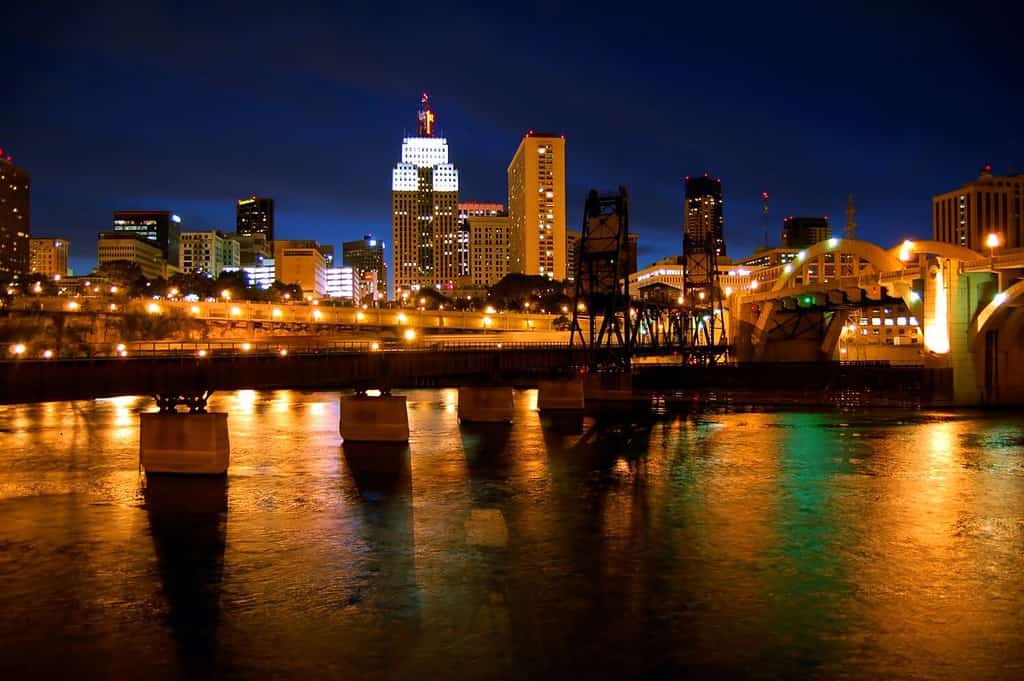
There are numerous parks throughout Saint Paul where visitors can enjoy outdoor activities such as biking trails or boating across the river.
©Near and Far Photography/Shutterstock.com
Saint Paul, Minnesota, is the capital of the state and one of its largest cities. It is located on the banks of the Mississippi River. The city has a population of around 307,695 people as of 2019. This makes it the 4th largest city along the Mississippi River. The city was founded in 1838 by two French-Canadian fur traders who named it after Saint Paul from the Bible.
The city has many cultural attractions, such as theater companies like The Ordway Center for Performing Arts and the Minneapolis Institute of Art museum complex with over 100 galleries and exhibits. It is also home to several historic sites, including Fort Snelling State Park, which was established in the 1820s during America’s Westward Expansion period.
In addition to these attractions, there are also numerous parks throughout Saint Paul where visitors can enjoy outdoor activities such as biking trails or boating across the river. There are also several diverse neighborhoods, from downtown to Frogtown, that make up this vibrant cityscape full of entertainment options for all tastes!
Summary of the 8 Biggest Cities on the Mississippi River
These are the four largest cities along the Mississippi River by land size.
| Rank | City Along the Mississippi River | Size in Square Miles |
|---|---|---|
| 1 | New Orleans | 349.8 square miles |
| 2 | Memphis | 302.6 square miles |
| 3 | Baton Rouge | 88.52 square miles |
| 4 | St. Louis | 66.17 square miles |
These are the four biggest cities along the Mississippi River, sorted by population size.
| Rank | City Along the Mississippi River | Size by Population |
|---|---|---|
| 1 | Memphis | 650,618 people |
| 2 | Minneapolis | 425,403 people |
| 3 | New Orleans | 391,006 people |
| 4 | St. Paul | 307,695 people |
What is the Oldest City on the Mississippi River?
If you do an Internet search for the oldest city on the Mississippi River, the majority of the answers will say Natchez, Mississippi, founded in 1716. However, if you include small towns, a case can be made for Cahokia, Illinois, founded in 1699 by the French in a location that had been a hub of native American activity from about 1050-1350.
Two other candidates to consider are Prairie du Chien, Wisconsin, a town of about 5500 people that was founded in 1673, and Kaskaskia, Illinois, founded in 1703 but now nearly a ghost town with less than 20 residents. For more information about the oldest towns on the Mississippi River, click this link: https://a-z-animals.com/blog/discover-the-oldest-towns-along-the-mississippi-river/
The photo featured at the top of this post is © RaksyBH/Shutterstock.com
Thank you for reading! Have some feedback for us? Contact the AZ Animals editorial team.




